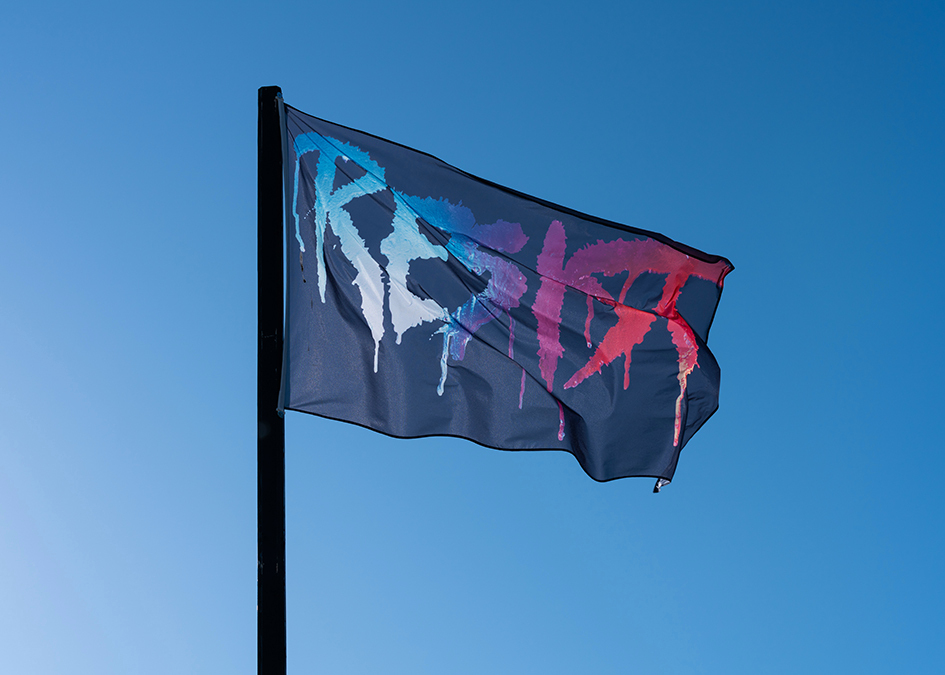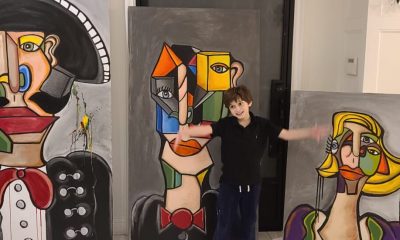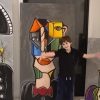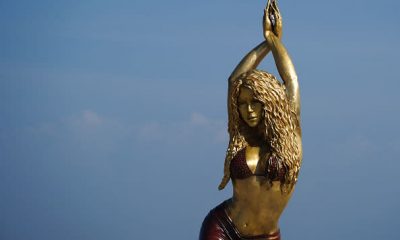ART WORLD NEWS
World Peace at MoCA Westport in Connecticut – ARTnews.com
In the 2000 comedy Miss Congeniality, Sandra Bullock’s Grace, an undercover FBI agent posing as a pageant contestant, is asked to define the “most important thing our society needs.” Her initial response—harsher punishment for parole violations—is poorly received. “And world peace,” she adds, a crowdpleaser that fulfills the audience and jury’s expectations of generic sentiment.
Opening at the tail end of a year defined by doubt and unrest, the group exhibition “World Peace” at MoCA Westport in Connecticut—co-curated by Ruth Mannes, Liz Leggett, and Todd von Ammon—took on this widely coveted, yet almost meaninglessly abstract concept. Despite the internationalism implied by the titular phrase, the show’s intergenerational roster primarily featured artists based in the US, with the works on view foregrounding an American outlook on political strife and human struggle.
Related Articles
Greeting viewers at the exhibition’s entrance was Tabor Robak’s MiniJumbo (2019), a scaled-down version of a stadium jumbotron screen. In place of sports game highlights, slogans like “New Addictive Substance” and “Work Harder” slide and pop across the screens in flashy fonts, the texts algorithmically generated by a neural network trained on contemporary advertising. This critique of capitalist rhetoric was accompanied by an array of works addressing militarism and war. Corita Kent’s screen-printed collage News of the Week (1969) presents a Pop-inflected take on the mass media representation of the Vietnam War, reproducing two covers from the same week’s issues of Newsweek and Time magazines in a glaring palette of red and green. Similarly employing appropriated imagery, Julia Wachtel’s painting Target (2017) juxtaposes a silkscreen print of an armed member of a Texan militia, patrolling the border in a menacing mask, with a painting of a cartoonish a balding middle-age man contemplating a toupee and girdle, drawn from a vintage greeting card. Robert Beck’s unexpectedly seductive Wound Filler (Shot #6), 2000, takes the form of a mysterious orifice, created by shooting a hole into a mass of wound filler, commonly used by morticians.
Julia Wachtel, Target, 2017, oil and acrylic ink on canvas, 60 by 76 inches; at MoCA Westport.
Courtesy the artist.
The exhibition’s larger second gallery was dominated by another text-based work, this one calling for action. A massive banner by the New Haven-based activist graphic design collective Class Action Collective, Vote for Science (2018) was suspended from the ceiling, dramatically spilling across the floor. The repurposed banner, reading HOPE FOR THE BEST, VOTE FOR SCIENCE in bold red and blue lettering, is one of many that the group installed on highway billboards across Connecticut, Florida, and Indiana during the 2018 midterm elections, in collaboration with the Union of Concerned Scientists. Some of the surrounding works conveyed humanity’s abominations, among them Cady Noland’s Untitled (Charles Manson), 1994, a collage of Xeroxed newspapers showing the notorious serial killer handcuffed during his trial. Others hinted at the cyclical nature of violence and injustice: the exhibition’s oldest work, a simple line drawing of a lynching on found cardboard by Bill Traylor—one of over 1,500 drawings the self-taught, Alabama-based artist made between 1939 and 1942—hung steps away from a documentary photograph by Spencer Platt depicting the arrest of a protestor in Portland during last summer’s Black Lives Matter uprisings (Female Protestor, 2020).
When I visited the show, Mannes told me that the title was inspired by a 1996 video installation by Bruce Nauman, in which five figures—one per screen—talk over one another, exchanging pleasantries (“I’ll talk, you listen” and vice versa) that ultimately turn aggressive (“If you say it once more, I’ll kill you.”). The exhibition reflected a similar skepticism about the idea of “world peace,” with the works on view highlighting atrocities, inequalities, and social fractures that can’t be simply wished away.











